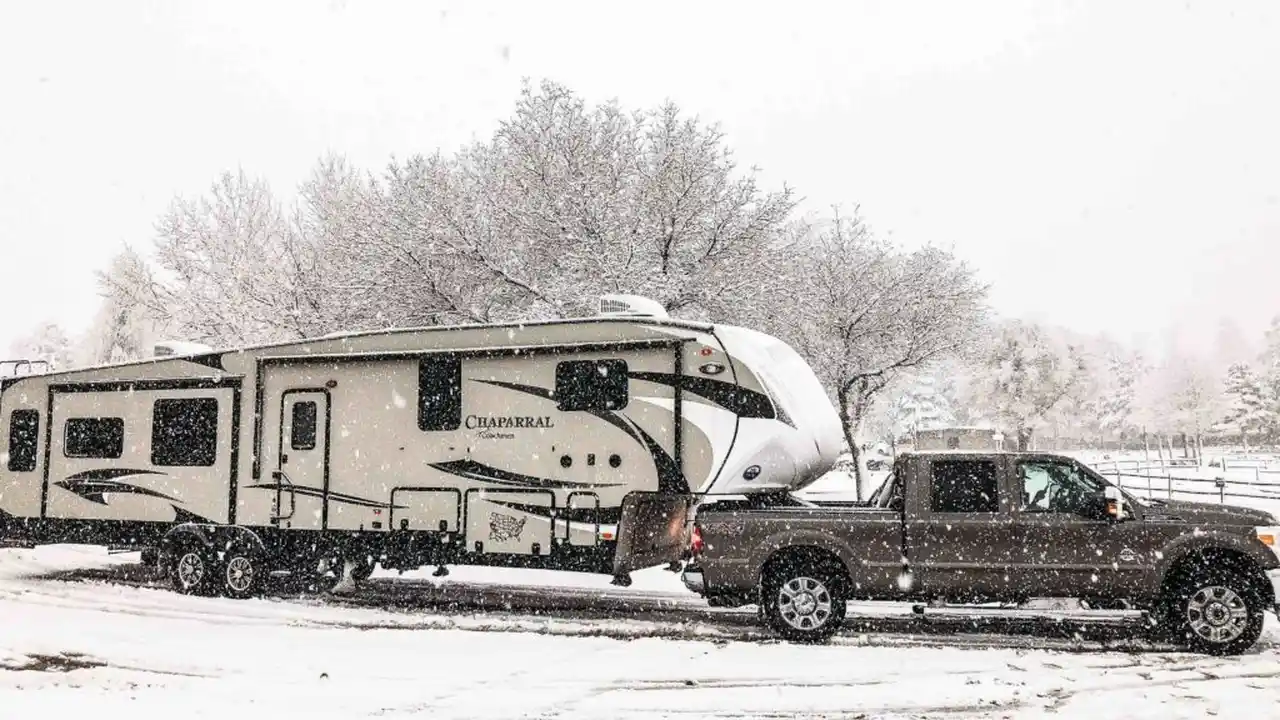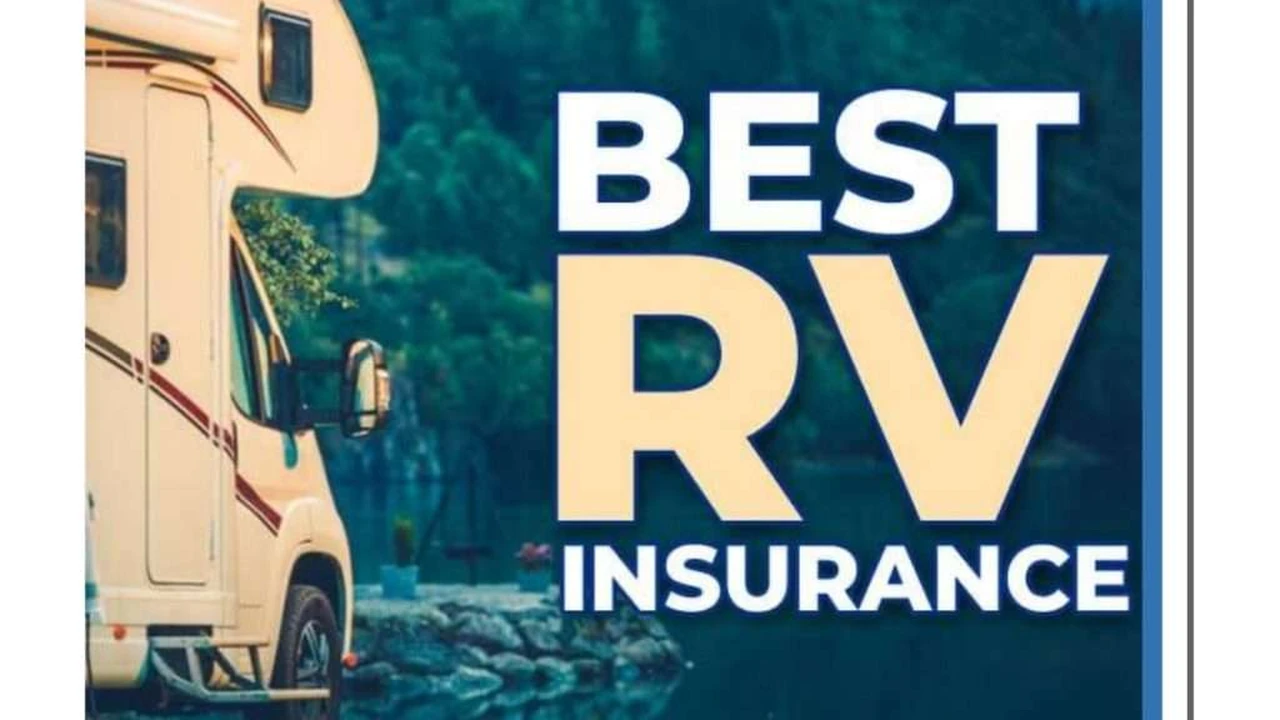How to Winterize Your RV in California

RV maintenance can seem daunting, especially for new RV owners. But with the right knowledge and a proactive approach, you can keep your RV in top shape and avoid costly repairs down the road. This comprehensive guide covers essential RV maintenance tips, from checking your tires to winterizing your rig, with product recommendations and real-world examples.
Understanding RV Systems Essential for Maintenance
Before diving into specific maintenance tasks, it's crucial to understand the core systems that make your RV function. These include the electrical system, plumbing system, and chassis. Neglecting any of these can lead to major headaches.
The Electrical System Powering Your RV Adventures
Your RV's electrical system typically consists of two main components: a 12-volt DC system powered by batteries and a 120-volt AC system powered by shore power or a generator. Understanding how these systems interact is key to troubleshooting electrical issues.
Battery Maintenance: RV batteries require regular maintenance to ensure optimal performance. This includes checking the water levels in lead-acid batteries (if applicable), cleaning terminals, and properly storing batteries during the off-season.
Product Recommendation: The NOCO Genius GEN5X1 is a smart battery charger and maintainer that can help extend the life of your RV batteries. It's compatible with various battery types and features automatic charging and maintenance modes. Price: Around $60.
Using the NOCO Genius: Simply connect the NOCO Genius to your battery terminals and plug it into a 120-volt outlet. The charger will automatically analyze the battery's condition and adjust the charging process accordingly. This prevents overcharging and ensures that your batteries are always ready to go.
Shore Power Management: When connected to shore power, it's important to use a surge protector to protect your RV's electrical system from voltage spikes. A surge protector acts as a buffer, absorbing excess voltage and preventing damage to sensitive electronics.
Product Recommendation: The Progressive Industries EMS-PT30X is a 30-amp surge protector that provides comprehensive protection against voltage spikes, open grounds, and reverse polarity. Price: Around $250.
Why Use a Surge Protector: Without a surge protector, a sudden voltage spike can fry your RV's appliances, including your refrigerator, air conditioner, and entertainment system. The EMS-PT30X not only protects against surges but also provides diagnostic information about the power source.
The Plumbing System Keeping Your RV Fresh and Clean
The RV plumbing system is responsible for supplying fresh water, removing wastewater, and managing waste disposal. Proper maintenance of this system is essential to prevent leaks, clogs, and unpleasant odors.
Fresh Water Tank Maintenance: Regularly sanitize your fresh water tank to prevent the growth of bacteria and algae. This can be done by adding a solution of bleach and water to the tank, letting it sit for a few hours, and then flushing the system thoroughly.
Black and Gray Water Tank Maintenance: Properly maintaining your black and gray water tanks is crucial to prevent odors and clogs. Use RV-specific tank treatments to break down waste and control odors. Avoid using household chemicals, as they can damage the tank sensors and seals.
Product Recommendation: The Happy Campers Organic RV Holding Tank Treatment is a highly effective and environmentally friendly tank treatment. It uses a blend of enzymes and minerals to break down waste and eliminate odors. Price: Around $25.
Happy Campers in Action: Simply add the recommended amount of Happy Campers treatment to your black and gray water tanks after each dumping. The treatment will begin working immediately to break down waste and control odors. Many RVers swear by its effectiveness.
Preventing Leaks: Regularly inspect all plumbing connections for leaks. Use Teflon tape or pipe dope to seal any leaky connections. Be especially vigilant in areas that are exposed to freezing temperatures, as freezing water can cause pipes to burst.
The Chassis Ensuring a Smooth and Safe Ride
The RV chassis is the foundation of your RV, providing support for all of the other systems. Proper maintenance of the chassis is essential for ensuring a smooth and safe ride.
Tire Maintenance: RV tires are often subjected to heavy loads and extreme temperatures. Regularly check your tire pressure and tread depth. Replace tires as needed, following the manufacturer's recommendations.
Product Recommendation: The TireMinder TM-77 Tire Pressure Monitoring System (TPMS) is a valuable tool for monitoring your RV's tire pressure and temperature. It provides real-time alerts if a tire is low on pressure or overheating. Price: Around $300.
Why a TPMS Matters: Low tire pressure can lead to tire blowouts, which can be dangerous and expensive. The TireMinder TPMS provides early warning of tire problems, allowing you to take corrective action before a blowout occurs.
Brake Maintenance: Inspect your brakes regularly for wear and tear. Replace brake pads and rotors as needed. Be sure to have your brakes serviced by a qualified mechanic.
Suspension Maintenance: The RV suspension system is responsible for providing a smooth ride. Inspect the shocks, springs, and bushings regularly for wear and tear. Replace worn parts as needed.
Essential RV Maintenance Tasks for Every RVer
Now that you understand the core RV systems, let's move on to specific maintenance tasks that every RVer should know.
Roof Inspection and Sealing Preventing Water Damage
The RV roof is constantly exposed to the elements, making it vulnerable to leaks. Regularly inspect your roof for cracks, holes, and worn sealant. Repair any damage immediately to prevent water damage.
Product Recommendation: Dicor Self-Leveling Lap Sealant is a popular choice for sealing RV roofs. It's easy to apply and provides a durable, waterproof seal. Price: Around $15 per tube.
Applying Dicor Sealant: Clean the area around the crack or hole with a mild detergent. Apply the Dicor sealant liberally, ensuring that it fills the gap completely. The self-leveling formula will create a smooth, even surface.
Preventative Measures: Regularly clean your RV roof to remove dirt and debris. This will help to prevent the buildup of mold and mildew, which can damage the roof membrane.
Awning Care and Maintenance Extending Its Lifespan
The RV awning provides shade and protection from the elements. Proper care and maintenance can extend its lifespan and prevent costly repairs.
Cleaning the Awning: Regularly clean your awning with a mild detergent and water. Avoid using harsh chemicals, as they can damage the fabric. Use a soft brush to scrub away dirt and debris.
Product Recommendation: 303 Aerospace Protectant is a highly effective protectant that can help to prevent fading and cracking of your RV awning. Price: Around $20 per bottle.
Using 303 Aerospace Protectant: Apply the 303 Aerospace Protectant to your awning after cleaning. The protectant will create a barrier against UV rays and other environmental factors, helping to keep your awning looking new for longer.
Storing the Awning: When not in use, retract your awning to protect it from the elements. Be sure to secure the awning properly to prevent it from flapping in the wind.
Appliance Maintenance Keeping Everything Running Smoothly
Your RV is equipped with a variety of appliances, including a refrigerator, stove, oven, and air conditioner. Regular maintenance of these appliances is essential to keep them running smoothly.
Refrigerator Maintenance: Clean the refrigerator coils regularly to improve its efficiency. Check the door seals for leaks and replace them as needed. Defrost the refrigerator regularly to prevent ice buildup.
Stove and Oven Maintenance: Clean the stove and oven regularly to remove grease and food residue. Check the burner flames to ensure that they are burning properly. Inspect the gas lines for leaks.
Air Conditioner Maintenance: Clean the air conditioner filters regularly to improve its efficiency. Inspect the coils for dirt and debris. Have the air conditioner serviced by a qualified technician annually.
Product Recommendation: Camco RV Refrigerator Fin Comb is a useful tool for cleaning the refrigerator coils. It allows you to reach into tight spaces and remove dirt and debris without damaging the coils. Price: Around $10.
Using the Fin Comb: Gently slide the fin comb between the refrigerator fins to remove dirt and debris. Be careful not to bend or damage the fins.
Generator Maintenance Ensuring Reliable Power on the Road
If your RV is equipped with a generator, regular maintenance is essential to ensure that it provides reliable power on the road.
Oil Changes: Change the generator oil regularly, following the manufacturer's recommendations. Use the correct type of oil and filter.
Air Filter Maintenance: Clean or replace the air filter regularly to prevent dirt and debris from entering the engine.
Spark Plug Maintenance: Inspect and replace the spark plugs as needed. Worn spark plugs can cause the generator to run poorly.
Product Recommendation: Briggs & Stratton Synthetic Oil is a high-quality oil that is designed for use in generators. It provides excellent protection against wear and tear. Price: Around $10 per quart.
Why Synthetic Oil: Synthetic oil provides better lubrication and protection than conventional oil, especially in extreme temperatures. It can also help to extend the life of your generator.
Winterizing Your RV Protecting It From Freezing Temperatures
If you live in an area that experiences freezing temperatures, it's essential to winterize your RV to protect it from damage. Winterizing involves draining the water system and adding antifreeze to prevent pipes from freezing and bursting.
Draining the Water System Removing All Water
The first step in winterizing your RV is to drain the water system. This includes draining the fresh water tank, the water heater, and all of the water lines.
Bypassing the Water Heater: Before draining the water heater, be sure to bypass it using the bypass valve. This will prevent antifreeze from entering the water heater.
Draining the Tanks: Open the drain valves on the fresh water tank, black water tank, and gray water tank. Allow the tanks to drain completely.
Draining the Water Lines: Open all of the faucets and shower heads in the RV. Use an air compressor to blow out the water lines. This will help to remove any remaining water.
Adding Antifreeze Protecting Against Freezing
After draining the water system, add RV antifreeze to protect against freezing. RV antifreeze is non-toxic and designed to prevent pipes from bursting.
Product Recommendation: Camco RV Antifreeze is a popular choice for winterizing RVs. It's non-toxic and provides excellent protection against freezing. Price: Around $10 per gallon.
Adding Antifreeze: Pour RV antifreeze into the fresh water tank. Turn on the water pump and run each faucet and shower head until antifreeze comes out. This will ensure that all of the water lines are filled with antifreeze.
Protecting the P-Traps: Pour antifreeze into the P-traps under the sinks and shower to prevent them from freezing.
Additional Winterizing Tips Extra Protection
In addition to draining the water system and adding antifreeze, there are several other steps you can take to winterize your RV.
Disconnect the Batteries: Disconnect the batteries to prevent them from draining during the winter. Store the batteries in a cool, dry place.
Cover the RV: Cover the RV with a RV cover to protect it from the elements. This will help to prevent damage from snow, ice, and UV rays.
Seal Any Openings: Seal any openings in the RV, such as vents and windows, to prevent drafts and keep out pests.
RV Maintenance Checklist Staying Organized
To help you stay organized, here's a comprehensive RV maintenance checklist:
- Check tire pressure and tread depth
- Inspect brakes
- Inspect suspension
- Inspect roof for leaks
- Clean and protect awning
- Clean refrigerator coils
- Clean stove and oven
- Clean air conditioner filters
- Change generator oil
- Clean generator air filter
- Inspect generator spark plugs
- Sanitize fresh water tank
- Treat black and gray water tanks
- Winterize RV (if applicable)
RV Maintenance Tools Every RVer Should Own
Having the right tools on hand can make RV maintenance easier and more efficient. Here are some essential tools that every RVer should own:
- Tire pressure gauge
- Torque wrench
- Socket set
- Wrench set
- Screwdriver set
- Pliers
- Multimeter
- Air compressor
- Caulking gun
- RV antifreeze
Finding Reliable RV Maintenance Services
While many RV maintenance tasks can be performed by RV owners themselves, some tasks require the expertise of a qualified technician. Here are some tips for finding reliable RV maintenance services:
- Ask for recommendations from other RVers
- Check online reviews
- Look for certified technicians
- Get a written estimate before work begins
The Importance of Regular RV Maintenance
Regular RV maintenance is essential for ensuring the safety, reliability, and longevity of your RV. By following the tips in this guide, you can keep your RV in top shape and enjoy many years of worry-free RVing.
:max_bytes(150000):strip_icc()/277019-baked-pork-chops-with-cream-of-mushroom-soup-DDMFS-beauty-4x3-BG-7505-5762b731cf30447d9cbbbbbf387beafa.jpg)






